
Infrastructure and defense services provider Parsons (NYSE:PSN) fell short of the market’s revenue expectations in Q4 CY2024, but sales rose 16.1% year on year to $1.73 billion. The company’s full-year revenue guidance of $7.25 billion at the midpoint came in 1.3% below analysts’ estimates. Its non-GAAP profit of $0.78 per share was 14.6% below analysts’ consensus estimates.
Is now the time to buy Parsons? Find out in our full research report .
Parsons (PSN) Q4 CY2024 Highlights:
CEO Commentary“2024 was another exceptional year for Parsons. We achieved record results for total revenue, adjusted EBITDA, adjusted EBITDA margin, operating cash flow, contract win rates, and contract awards. We are delivering consistent results as we reported double-digit organic revenue growth every quarter for the last two years,” said Carey Smith, chair, president, and chief executive officer.
Company Overview
Delivering aerospace technology during the Cold War-era, Parsons (NYSE:PSN) offers engineering, construction, and cybersecurity solutions for the infrastructure and defense sectors.
Defense Contractors
Defense contractors typically require technical expertise and government clearance. Companies in this sector can also enjoy long-term contracts with government bodies, leading to more predictable revenues. Combined, these factors create high barriers to entry and can lead to limited competition. Lately, geopolitical tensions–whether it be Russia’s invasion of Ukraine or China’s aggression towards Taiwan–highlight the need for defense spending. On the other hand, demand for these products can ebb and flow with defense budgets and even who is president, as different administrations can have vastly different ideas of how to allocate federal funds.
Sales Growth
Reviewing a company’s long-term sales performance reveals insights into its quality. Any business can have short-term success, but a top-tier one grows for years. Thankfully, Parsons’s 11.3% annualized revenue growth over the last five years was impressive. Its growth surpassed the average industrials company and shows its offerings resonate with customers, a great starting point for our analysis.
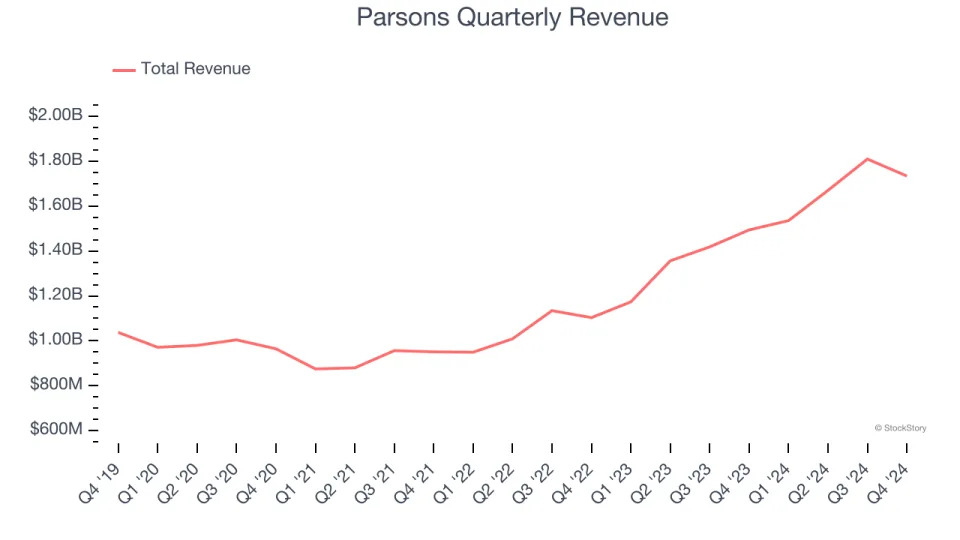
We at StockStory place the most emphasis on long-term growth, but within industrials, a half-decade historical view may miss cycles, industry trends, or a company capitalizing on catalysts such as a new contract win or a successful product line. Parsons’s annualized revenue growth of 26.8% over the last two years is above its five-year trend, suggesting its demand was strong and recently accelerated.
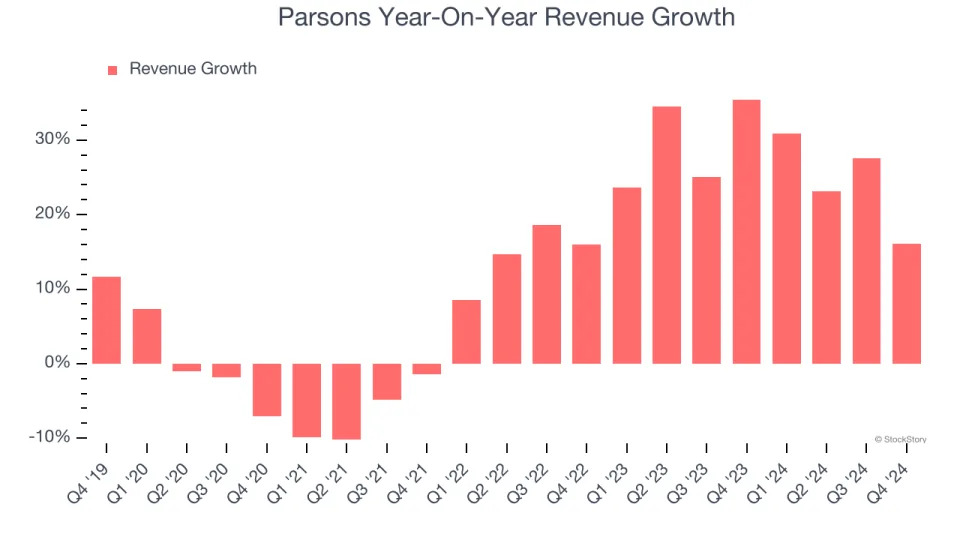
We can dig further into the company’s revenue dynamics by analyzing its backlog, or the value of its outstanding orders that have not yet been executed or delivered. Parsons’s backlog reached $8.9 billion in the latest quarter and averaged 4.1% year-on-year growth over the last two years. Because this number is lower than its revenue growth, we can see the company fulfilled orders at a faster rate than it added new orders to the backlog. This implies Parsons was operating efficiently but raises questions about the health of its sales pipeline.
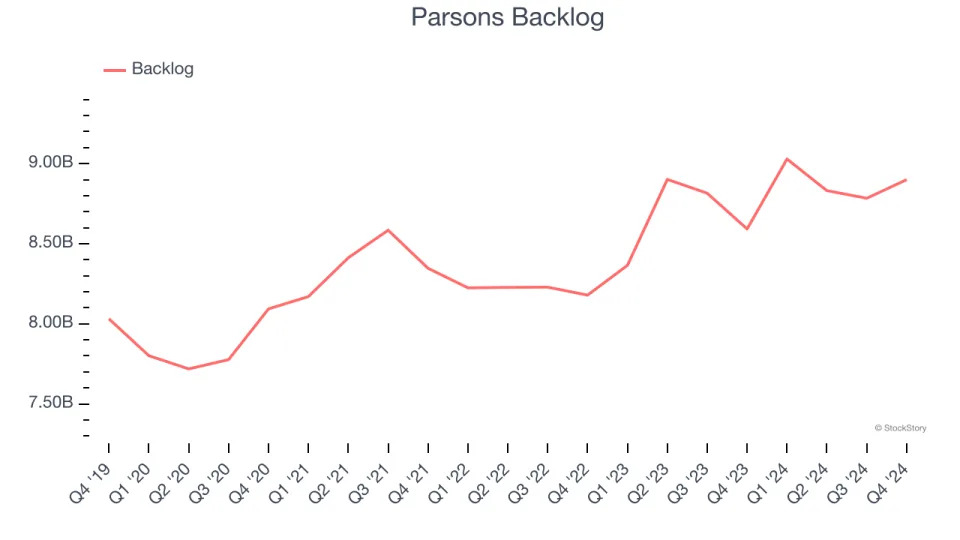
This quarter, Parsons’s revenue grew by 16.1% year on year to $1.73 billion but fell short of Wall Street’s estimates.
Looking ahead, sell-side analysts expect revenue to grow 9.1% over the next 12 months, a deceleration versus the last two years. Despite the slowdown, this projection is admirable and implies the market is baking in success for its products and services.
Today’s young investors likely haven’t read the timeless lessons in Gorilla Game: Picking Winners In High Technology because it was written more than 20 years ago when Microsoft and Apple were first establishing their supremacy. But if we apply the same principles, then enterprise software stocks leveraging their own generative AI capabilities may well be the Gorillas of the future. So, in that spirit, we are excited to present our Special Free Report on a profitable, fast-growing enterprise software stock that is already riding the automation wave and looking to catch the generative AI next .
Operating Margin
Parsons was profitable over the last five years but held back by its large cost base. Its average operating margin of 5.1% was weak for an industrials business.
On the plus side, Parsons’s operating margin rose by 1.8 percentage points over the last five years, as its sales growth gave it operating leverage.
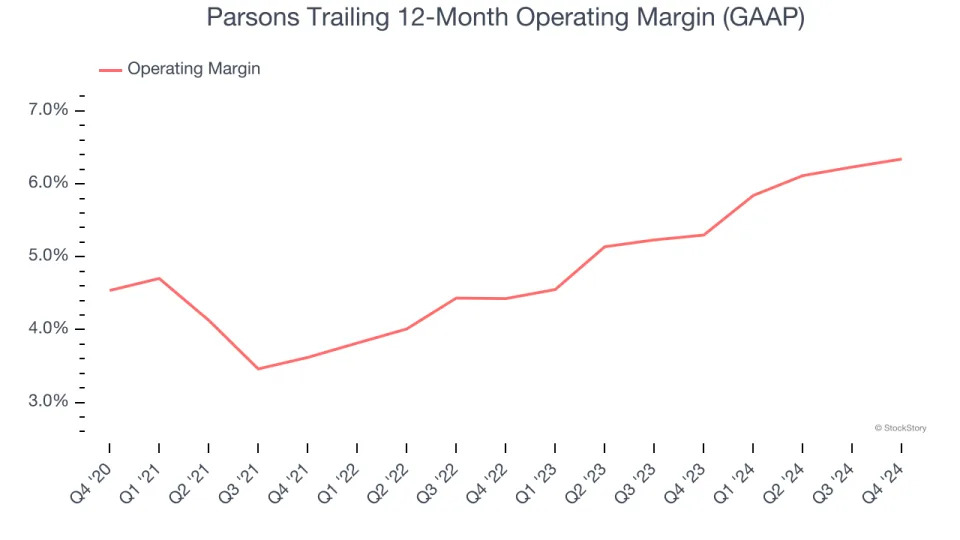
In Q4, Parsons generated an operating profit margin of 5.8%, in line with the same quarter last year. This indicates the company’s overall cost structure has been relatively stable.
Earnings Per Share
We track the long-term change in earnings per share (EPS) for the same reason as long-term revenue growth. Compared to revenue, however, EPS highlights whether a company’s growth is profitable.
Parsons’s EPS grew at a decent 9.8% compounded annual growth rate over the last five years. Despite its operating margin expansion during that time, this performance was lower than its 11.3% annualized revenue growth, telling us that non-fundamental factors such as interest and taxes affected its ultimate earnings.
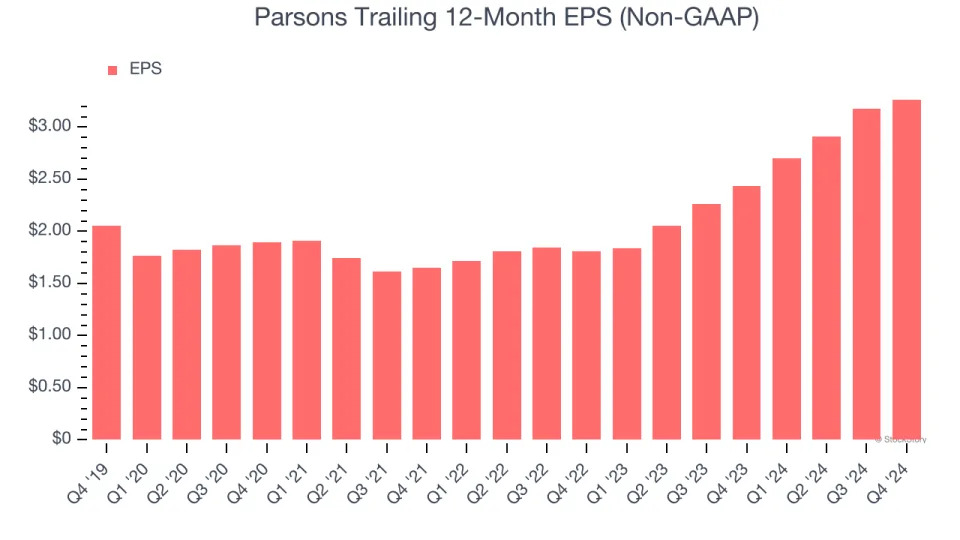
Diving into Parsons’s quality of earnings can give us a better understanding of its performance. A five-year view shows Parsons has diluted its shareholders, growing its share count by 11.7%. This dilution overshadowed its increased operating efficiency and has led to lower per share earnings. Taxes and interest expenses can also affect EPS but don’t tell us as much about a company’s fundamentals.
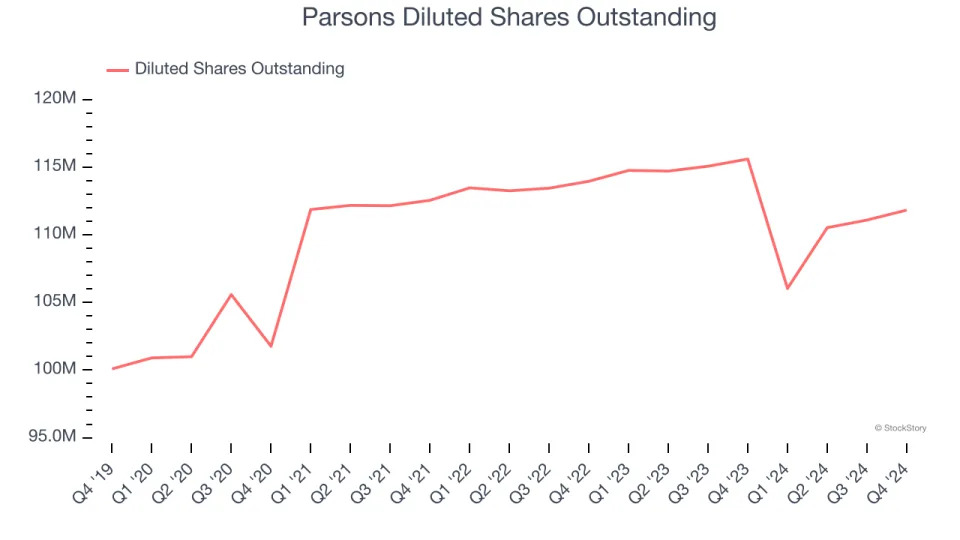
Like with revenue, we analyze EPS over a more recent period because it can provide insight into an emerging theme or development for the business.
For Parsons, its two-year annual EPS growth of 34.4% was higher than its five-year trend. This acceleration made it one of the faster-growing industrials companies in recent history.
In Q4, Parsons reported EPS at $0.78, up from $0.69 in the same quarter last year. Despite growing year on year, this print missed analysts’ estimates, but we care more about long-term EPS growth than short-term movements. Over the next 12 months, Wall Street expects Parsons’s full-year EPS of $3.27 to grow 21.7%.
Key Takeaways from Parsons’s Q4 Results
We were impressed by how significantly Parsons blew past analysts’ backlog expectations this quarter. On the other hand, its revenue, EPS, and EBITDA fell short of Wall Street's estimates along with its full-year revenue and EBITDA guidance. The outlook implies the conversion of its backlog into sales will take longer than anticipated. Overall, this was a weaker quarter. The stock traded down 8.8% to $67 immediately following the results.
Parsons underperformed this quarter, but does that create an opportunity to invest right now? We think that the latest quarter is just one piece of the longer-term business quality puzzle. Quality, when combined with valuation, can help determine if the stock is a buy. We cover that in our actionable full research report which you can read here, it’s free .





